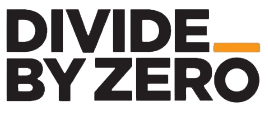Home » 3D Printing Knowledge Center » Success Stories » How 3D Printing Helped Save a Child’s Life

How 3D Printing Helped Save a Child's Life
A Divide By Zero Success Story
The applications of 3D printing are vast and increasingly impactful, extending far beyond experimentation. Not only does 3D printing play significant roles in architecture and engineering, but it is also making remarkable contributions to the field of medicine. This innovative technology is proving to be crucial in saving lives and improving healthcare outcomes.
The Challenge: A Life-Threatening Condition
A 4-year-old girl suffered from craniosynostosis, a congenital condition where the joints of the skull fuse prematurely during infancy. This abnormal fusion resulted in a deformed skull, restricting normal brain growth and increasing intracranial pressure. The condition posed serious risks of visual, auditory, and olfactory impairments, nerve damage, and even mental retardation if left untreated.
The conventional surgical plan had several limitations, including:
- 2D Imaging: Existing imaging techniques were two-dimensional, leaving much to the surgeon’s experience.
- Lack of Precision: Bone cuts were estimated based on CT scans, and precise planning was often made during surgery.
- Training Difficulties: Medical students found it hard to grasp the procedure due to the lack of precision in imaging.


The Solution: 3D Printing for Precise Skull Imaging
To overcome these challenges, 3D printing was used to create an accurate, three-dimensional replica of the patient’s skull, enabling precise surgical planning and mock surgery.
Why 3D Printing?
- Exact Proportions: 3D printing provided a highly accurate, full-scale replica of the deformed skull, overcoming the limitations of 2D imaging.
- Pre-Surgical Planning: Surgeons performed a mock surgery on the 3D-printed skull, helping them finalize the surgical plan before the actual operation.
- Enhanced Training: The 3D model allowed medical students to better understand the procedure, improving their training and precision in surgery.

Aion 500 MK2 by Divbyz
Redefining 3D Printing Standards with India’s First IoT-Enabled Industrial-Grade Printer
Meet the AION 500 MK2, India’s first IoT-enabled industrial-grade 3D printer with advanced servo mosquito extruder and AFPM technology. Experience high performance, auto-switchover functionality, and a massive build volume—all at an affordable price.

Implementation: Overcoming Challenges with 3D Printing
The 3D-printed replica of the deformed skull provided the surgical team with invaluable insight into the complexities of the condition. By practicing on the 3D model, they were able to determine the best surgical approach, resulting in a more efficient and precise operation.
Results and Impact: Transforming Medical Procedures
The integration of 3D printing into the medical field has the potential to revolutionize patient care:
- Precise Surgical Planning: The ability to create exact replicas of patient anatomy has enabled more accurate and pre-planned surgeries.
- Improved Patient Outcomes: The patient in this case successfully underwent surgery for craniosynostosis and is now recovering, showing marked improvements in her cranial condition.
- Enhanced Medical Training: Medical students and surgeons alike benefit from the increased precision and practice opportunities provided by 3D-printed models.
Conclusion: Revolutionizing Medicine with 3D Printing
The use of Divide By Zero’s 3D printing technology in this life-saving case demonstrates the immense potential of 3D printing in medicine. As this technology continues to evolve, its ability to transform surgical procedures, improve patient outcomes, and enhance medical training will only grow.
For more success stories on how 3D printing is revolutionizing industries, stay tuned to Divide By Zero’s blog and learn about the transformative power of this innovative technology.

